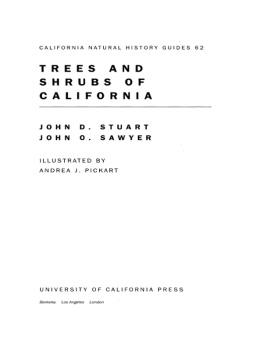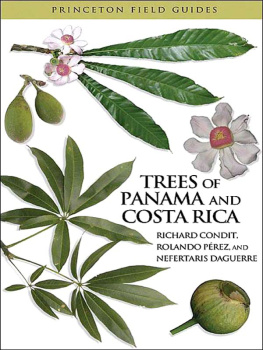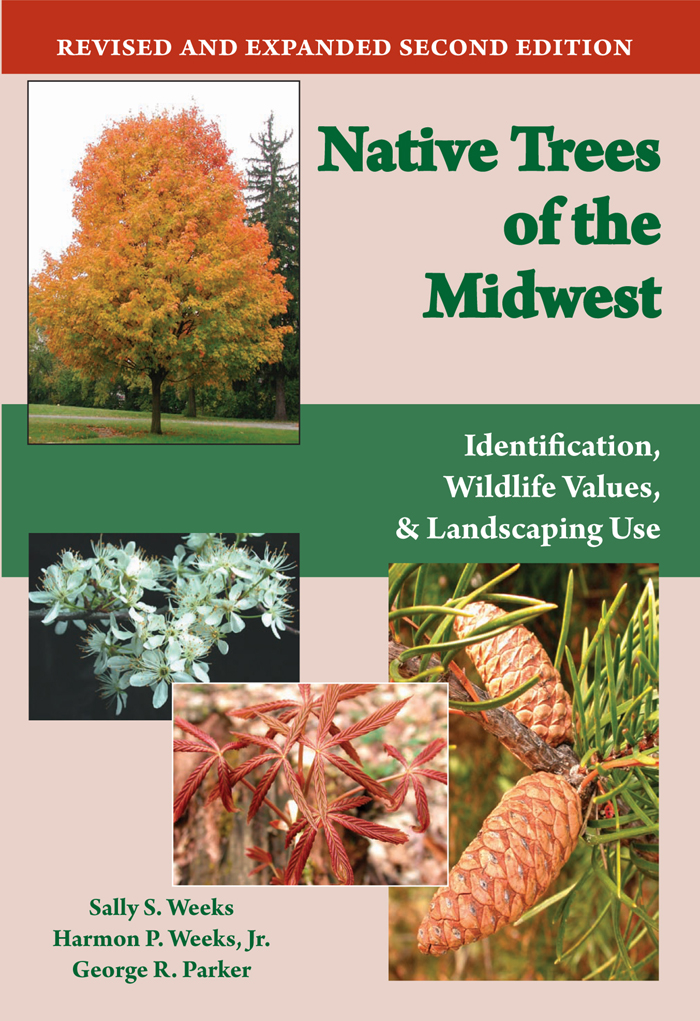Native Trees of the Midwest
Native Trees of the Midwest
Identification, Wildlife Values, and Landscaping Use
Revised and Expanded Second Edition
Sally S. Weeks
Harmon P. Weeks, Jr.
George R. Parker
West Lafayette, Indiana / Purdue University Press
Copyright 2010 by Purdue University. All rights reserved. Printed in China.
Range maps by Michael A. Black.
Drawings in the glossary section are taken from C. S. Sargent, Silva of North America (Boston, New York, Houghton, Mifflin and Co., 18901902).
Photos taken by Sally Weeks unless otherwise noted.
ISBN: 978-1-55753-572-6
The Library of Congress has cataloged the earlier edition as follows:
Weeks, Sally S., 1956
Native trees of the Midwest : identification, wildlife values, and landscaping use / Sally S. Weeks, Harmon P. Weeks, Jr., George R. Parker.
p. cm.
Includes bibliographical references and index.
ISBN 1-55753-299-0
1. TreesMiddle WestIdentification. 2. TreesIndianaIdentification. 3. TreesMiddle WestPictorial works. 4. TreesIndianaPictorial works. I. Weeks, Harmon Patrick, 1944-II. Parker, George R. III. Title.
QK128.W45 2005
582.160977dc22
2005002889
Contents
Preface to the Second Edition
Since the publication of the first edition of Native Trees of the Midwest in 2005, we have realized that it would be advantageous to include accounts for some non-native, introduced species that may be confused with natives. So for this second edition, we have added twelve species not native to North America that have become problematic here and elsewhere. Although some introduced species behave themselves, others, such as those we have included in this edition, have become invasive, escaping into the wild and potentially negatively impacting native species and their habitats.
In addition, there are scattered updates, corrections, and photo editions, as well as revisions to the keys to incorporate the introduced species.
Preface to the First Edition
Indiana is in the heart of the Midwest, yet its diverse flora is a rich mixture of species of northern and southern affinities. In northern Indiana, the tree species are more familiar to those living in the Lake States, and in southern Indiana, many southern trees reach the northern-most limits of their ranges. There are approximately 100 species of trees native to Indiana. Their ranges extend throughout most of the Midwest and into the Midsouth and the Lake States. It is for this reason that we chose a broad scope for this field guide, including not only all native trees of Indiana but those of the surrounding states as well.
It is our intention with this book to introduce the student, layperson and professional to the native trees of Indiana and surrounding states by providing hard-to-find color images and updated nomenclature from previous, state-specific field guides. These guides include Trees of Indiana, by Charles C. Deam, Forest Trees of Illinois, by Robert H. Mohlenbrock, The Woody Plants of Ohio, by E. Lucy Braun, Michigan Trees, by Burton V. Barnes and Warren H. Wagner, Jr., and Trees and Shrubs of Kentucky, by Mary E. Wharton and Roger W. Barbour. This is by no means a substitute for these classics, but rather another source of reference.
Sometimes our decision on what constitutes a tree may differ from the opinion of other authors, but regional size variation played a role in our selections. Species with a single stem (usually) or with a trunk diameter of 3 inches or more, and a height of 20 feet were included. Introduced species have not been included, but we have provided a list of commonly planted non-native trees
Trees in this guide are separated into color-coded sections. The first major division is into conifers and hardwoods. The conifers are separated into evergreen and deciduous; the hardwood classifications are more complex and include separation by leaf type and branching pattern. Each species has color photographs illustrating important features and a written description of these features. General information is provided on size, form and habitat of each species; some history and commercial uses of many trees is included as well. Information on wildlife uses and landscaping value is given for all species. There are Quick ID and Similar Species Distinction boxes for each species that give easy-to-find comparisons and important keys to aid in identification. We also provide winter and summer keys.
A single field guide to the trees of any area is not going to provide all the information available on the included species. This book is no exception. Additional information on trees in our area may be found in several quality books cited in our Bibliography.
Introduction
Tree identification is a fun, yet challenging avocation to some, and a necessary component of the job for others. Either way, acquiring skills in identification requires dedication, because the most effective way to learn the trees is through repetition. The more you see trees, particularly in their natural environs, with all of their variability, the more adept you become at their identification. One important thing to remembermost species can be determined by just a few key distinguishing characteristics.
There are many characteristics that aid in classifying a tree to the proper species. Both winter and summer keys have been provided to direct you to a specific group of trees or a particular species. And though we have attempted to use a minimum amount of technical terminology, there are some terms that we cannot do without. The following illustrations and discussion of the specific features and characteristics of trees should be studied in order to better understand tree identification.
Nomenclature
Nomenclature, or the naming of trees, is an important part of the study of trees. Scientific (Latin) names and common names are listed for all species; the Latin name is italicized and is recognized worldwide. The common names vary from region to region and are often colloquial. For instance, there are 30 known common names for the common southern longleaf pine, Pinus palustris, but only one recognized and accepted scientific name. These common, or vernacular, names usually result from the way a tree species is utilized by people in a given region of the country. It is always helpful to learn both common and scientific names.
The scientific names in this book generally follow the taxonomy used in Harlow and Harrars Textbook of Dendrology, 9th edition (Hardin et al. 2001). There are sometimes changes in the scientific names, usually as a result of a historically accepted name taking precedence over a current one. Prior names are often mentioned in the text.
Classification
The classification, or grouping, of woody plants into categories is a hierarchy, with each level becoming more unique as they are separated from the previous. The major groups dealt with in tree identification are the family, genus and species. As an example, black oak (the common name) has a specific name Quercus velutina. The genus is Quercus; the species name (the specific epithet) is velutina; and it is in the family Fagaceae. There are many members of the Fagaceae, or Beech family, and there are quite a few members of the genus Quercus; however, there is only one specific species named Quercus velutina, because it has features unlike any other tree species, and a few characteristics unlike any other oak. So the species is a very specific level in the hierarchy. The genus is a broader group covering many similar trees, in this case, all the oaks. The family is an even broader group that encompasses many trees with similar floristic characteristics, including the oaks, the beeches, and the chestnuts.











